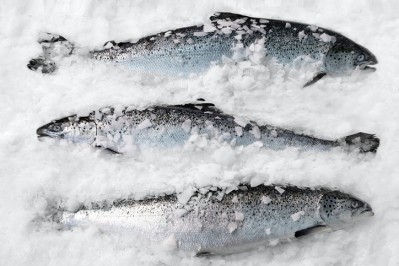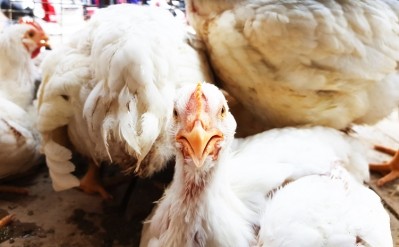White Dog Labs adds site to expand novel protein production

The Delaware-based biotech startup’s bid to acquire the Central Minnesota Renewables (CMR) plant was accepted by the Morrison County district court.
The company is focused on addressing food sustainability and uses a fermentation process to generate nutritional products for use in animal feed. It is funded by Musea Venture – the investment arm of the Somekh family.
The former dry-grind corn ethanol plant is set to be transitioned into a production center for White Dog Labs (WDL) novel protein aquafeed ingredient, ProTyton, and the butyrate-rich feed additive MiruTyton, said Bryan Tracy, CEO with WDL. The company is investing about $15m in new capital into the project.
“It’s always been our strategy to repurpose, reutilize dry grind ethanol assets for helping that industry move forward toward new opportunities to support the broader ag industry,” he told FeedNavigator. “This facility, in particular, has had some really nice enhancements and modifications to it that makes it a very attractive location and asset for us.”
The initial intention was to have retrofits to the facility completed and see operations start by the end of 2020, he said.
“Covid-19 is obviously having an impact on timelines, so with that uncertainty, it’s difficult to project out what the timelines are,” said Tracy. “But we still, on our internal schedules, [have] the intent to start that facility back up, literally start it back up, at the beginning of 2021, perhaps Q4 2020, but we’ll see.”
However, it will be a longer process to bring the plant to full production capacity, he said. “We’ll have some ramp-up time to secure market and so forth – it doesn’t happen overnight,” he added.
Facility highlights and biotech hub
The ethanol facility previously ground about 7.5m bushels of corn a year and the goal is to have the site return to operating at that capacity, said Tracy. At that scale, it would generate about 100,000 metric tons combined of ProTyton and MiruTyton.
The ethanol facility had undergone several modifications that altered it from a traditional corn ethanol facility, he said. WDL is planning to reuse about 70% of the existing assets within the site.
“For us to get it back up and operational we’ll be installing a new drying operation, because we’re making a dried animal feed product or aquaculture feed product,” he said. “It will need a known, but new to the site, drying operation and that’s largely it, which makes it feasible to have optimistic timelines be realistic timelines – because we come into a facility that was pretty well designed, to begin with for our purpose.”
The company plans to work with producers in the area to source the corn needed for its products, he said.
The protein feed ingredient generated at the site will go to several sources, Tracy said. Some will be used to help develop market space for the product with finfish producers, particularly in Norway, Chile and Japan, or spur use in shrimp feed.
WDL is also working on building markets for its feed additive, he said. The regional focus for the development of that market currently is North America and the product is being tested for use with broilers, swine, and cattle.
In addition, the new production facility is set to act as a fermentation development hub for current and upcoming products, he said. “We’ve gone from idea of the product to the intention to retrofit CMR in less than three years,” he added.
“We have a portfolio of additional products that are in different stages of development and prototyping of final products that could be produced at the facility or will definitely be benefited by being able to demonstrate aspects of those technologies at the CMR facility,” Tracy said.
“It has the potential to be much more for us than just a production site but a bio-industrial hub,” he said. “That it is close to Minneapolis is attractive and its proximity to major stakeholders in related industries, particularly Cargill, is obviously attractive – it’s got a lot going for it.”
Project with Cargill
In September 2019, WDL announced a project with Cargill as the agri-giant sought to expand its portfolio of aquafeed protein ingredients using the company’s single-cell protein product. The protein has been tested in salmon and trout.
The off-take agreement provides access to the protein ingredient for use in aquaculture feeds.















